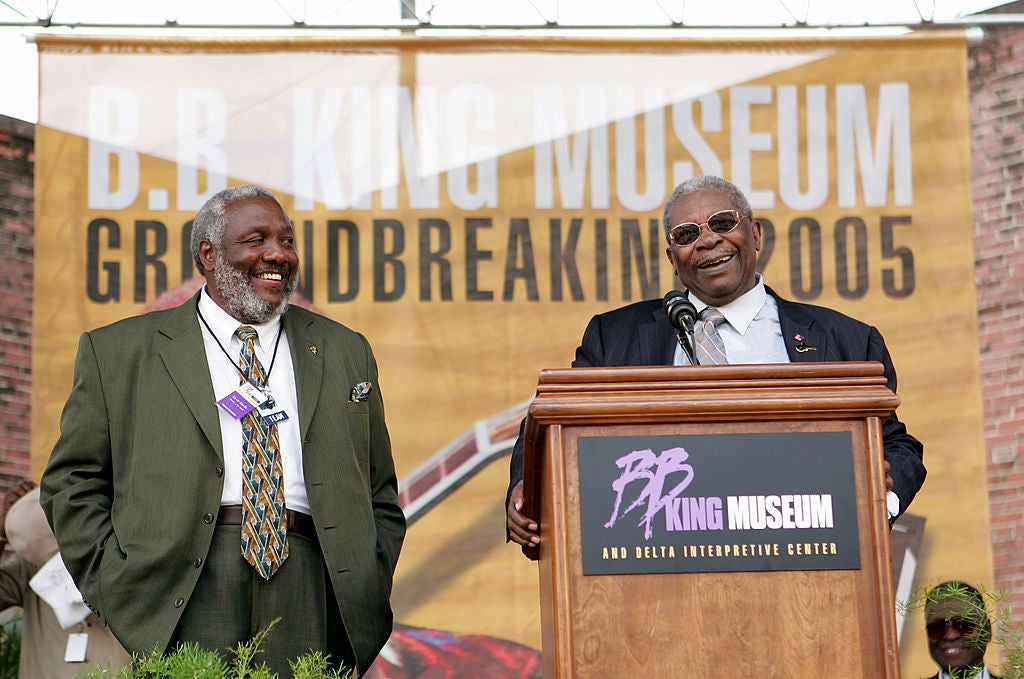
February might be Black History Month, but that doesn’t mean you can’t learn about it all year long. Summertime usually means vacation, so if you’re trying to plan your next trip, you can soak up some Black culture and celebrate our rich heritage at any one of these spots!
Congo Square, New Orleans, Louisiana
Congo Square is located in the Tremé neighborhood of New Orleans in the southwest corner of Louis Armstrong Park. “During the 19th century, Louisiana’s French and Spanish colonial era, Congo Square was a place where hundreds and sometimes thousands of enslaved and free African descendants would congregate each Sunday to socialize and set up a marketplace to vend food, arts and crafts.”
This was also a place where people gathered to sing, play music, and dance in remembrance of their African heritage. These “gatherings in Congo Square influenced later indigenous New Orleans performance styles, such as Mardi Gras Indian traditions, the second line, New Orleans jazz and rhythm & blues.”
Zora Neale Hurston Dust Tracks Heritage Trail, Fort Pierce, Florida
From 1957 to 1960, beloved and celebrated author Zora Neale Hurston “lived, wrote, and taught school in Fort Pierce,” which is also the place where she spent the final years of her life. It was here in this “small coastal city halfway between Miami and Daytona Beach” that she wrote plays, short stories, and four books, including her most famous bestseller Their Eyes Were Watching God. The trail is named after “Hurston’s 1942 autobiography Dust Tracks on a Road. It offers ‘all of the places she touched when she was alive.’”
Reconstruction Era National Historical Park, Beaufort, South Carolina
This noncontiguous park was established in 2019. It includes seven sites, “the Old Beaufort Firehouse downtown, which serves as the visitor center; Darrah Hall at the Penn Center on St. Helena Island,” one of our country’s first schools for former slaves, and “Camp Saxton, once a recruitment depot and training ground for Civil War Black soldiers located in Port Royal.”
It also includes, “First African Baptist Church in downtown Beaufort, which served as a school for formerly enslaved people during the Civil War and the home church of Robert Smalls; historic Brattonsville in York County, where the lives of newly freed Black people living and working on an 800-acre plantation are interpreted; Tabernacle Baptist Church in Beaufort, which also doubled as a school during the Civil War and held an Emancipation Day service on Jan. 1, 1863; [and] Robert Smalls’ house, a property at 511 Prince St. he purchased in the 1863 Direct Tax Auctions in Beaufort in which he lived for the rest of life. Smalls was born a slave in 1839 and grew up in this house, then owned by his master Henry McKee.”
Colored Musicians Club & Jazz Museum, Buffalo, New York
Established in 1917, The Colored Musicians Club “is the only continuously running, all-Black-owned music venue in the United States.” It is “a place for Black musicians to socialize, play music, and rehearse. It has hosted the likes of musical legends like Ella Fitzgerald and Duke Ellington.” After being designated as a historical preservation site in 1999, you can head to the first floor to visit a multimedia museum and enjoy historic memorabilia.
Port Chicago, San Francisco, California
Reservations with at least two weeks’ notice are required to go see this Memorial because it’s on an active military base. On July 17, 1944 in the middle of World War II, “Two ships being loaded with ammunition for the Pacific theatre troops blew up, causing World War II’s worst homefront disaster.”
In the segregated military at the time, this work was mostly done by Black soldiers. The explosion killed 320 men, most of whom were Black. Less than a month later, the surviving members of the battalions were ordered to resume their work of loading and unloading munitions, but 258 out of the 328 refused. Fifty of these men were singled out and charged with mutiny. “During the defense proceedings of the trial, Thurgood Marshall was there as an observer. Serving as Chief Consul for the NAACP, Marshall held several press conferences and shared his concerns about racial discrimination in the military.” This tragedy did lead to some positive effects, including the start of the navy desegregating its units the following year.
The B.B. King Museum and Delta Interpretive Center, Indianola, Mississippi
This museum tells the story of Riley B. King, the man who would go on to become musical legend B.B. King. You can learn about “King’s life, his career, and stories of the Delta—its history and music, social mores and race relations, literature and legends, adversities and successes. You’ll find it in B.B.’s hometown of Indianola, which sits squarely in the middle of the Mississippi Delta, the land that gave birth to American music.”







